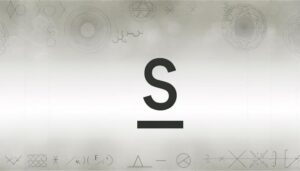What Symbol Represents High Beam Lights on a Dashboard?
The high beam lights symbol, vital for driving safety, is an essential dashboard indicator. It appears as a blue icon resembling a five-line beacon or lighthouse.
High beam lights provide maximum illumination, designed for rural or poorly lit roads, enhancing visibility and detecting hazards. Proper symbol recognition guarantees drivers use these lights efficiently, preventing glare to oncoming traffic.
Advanced systems now offer adaptive high beams, automatically adjusting to driving conditions. Misinterpreting this indicator can lead to road hazards.
For details on high beam functionality, usage etiquette, troubleshooting, and enhancing night driving safety, further valuable insights await.
Key Takeaways
- The high beam light symbol appears as a blue icon on the vehicle's dashboard.
- The symbol is crucial for indicating active high beam lights.
- Proper recognition of the symbol enhances driving safety and visibility.
- The icon ensures drivers know when their high beams are in use.
- Misinterpreting this symbol can lead to potential driving hazards.
Importance of High Beam Lights
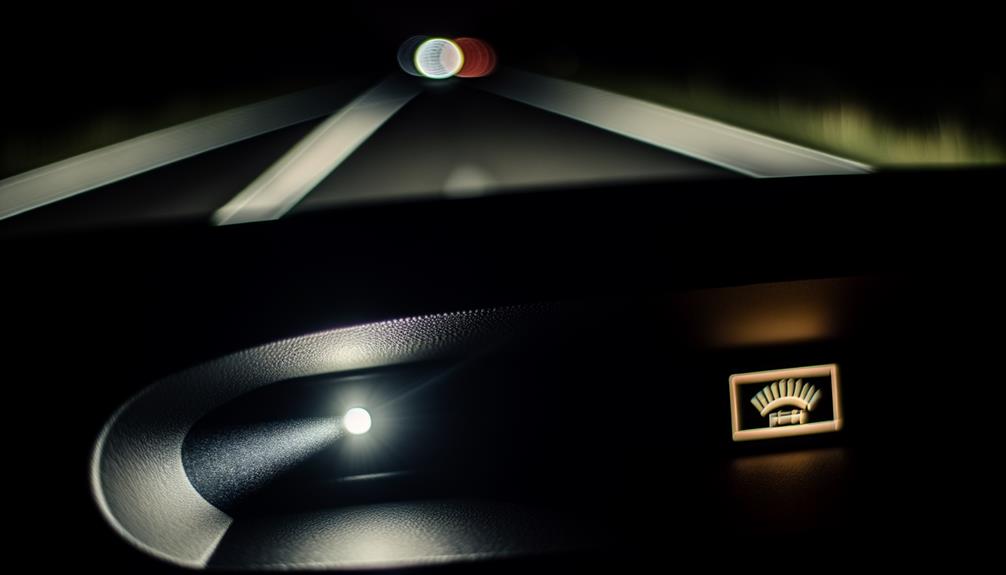
High beam lights are essential for providing maximum visibility during nighttime driving and in conditions of poor visibility. They project a powerful, focused beam of light, illuminating a greater distance ahead compared to low beam lights.
This enhanced illumination is vital for detecting potential hazards such as animals, pedestrians, and road obstacles at a distance, allowing drivers more time to react. High beam lights greatly improve road safety, especially on rural or poorly lit roads.
The technology behind high beam lights has evolved, incorporating advanced features like adaptive systems that adjust beam patterns based on driving conditions. This ensures optimal lighting without causing glare to oncoming traffic, thereby balancing visibility and safety.
Understanding their importance is fundamental to responsible driving.
Recognizing the Symbol
Recognizing the high beam lights symbol is crucial for safe driving, as it usually appears as a blue icon on your dashboard resembling a headlamp with horizontal lines.
By understanding common dashboard indicators and their color codes, drivers can quickly identify when high beams are activated.
This awareness not only enhances visibility but also guarantees proper usage to avoid blinding oncoming traffic.
Common Dashboard Indicators
Among the various dashboard indicators, the high beam lights symbol is one that drivers should be able to recognize instantly for safe and effective vehicle operation. Understanding these symbols is important for maintaining vehicle functionality and safety. The high beam indicator, typically a blue icon resembling a headlight with horizontal lines, signifies that the vehicle's high beam lights are active. Recognizing this symbol is essential, especially in low visibility conditions or at night.
| Symbol | Meaning |
|---|---|
| High Beam | High beam headlights are on |
| Check Engine | Engine needs inspection |
| Battery | Battery charging issue |
Color and Shape Recognition
The high beam lights symbol, a critical component of dashboard indicators, is typically depicted as a blue icon with a headlight and horizontal lines, making it easily distinguishable for drivers. This specific coloration and design are standardized to ensure immediate recognition, promoting safe driving practices.
The blue hue is chosen for its high visibility and contrast against other dashboard symbols, while the horizontal lines represent the extended reach of high beam lights. This design aids in quick cognitive processing, allowing drivers to respond promptly. Understanding this symbol's color and shape is crucial for effective vehicle operation, especially in low-visibility conditions.
Consequently, manufacturers adhere to these conventions to maintain uniformity across different vehicle models, enhancing driver awareness and road safety.
Importance of High Beams
Understanding the importance of high beams in vehicle operation hinges on the ability to accurately recognize the high beam lights symbol on the dashboard. High beams are essential for improving visibility on poorly lit roads, thereby greatly enhancing driver safety.
The symbol, typically represented by a blue icon with rays extending outward, must be quickly and accurately identified to guarantee their proper use. Engaging high beams when appropriate aids in early detection of obstacles, pedestrians, and road signs.
Conversely, improper use can dangerously blind oncoming traffic. Mastery of this symbol ensures drivers can utilize high beams effectively, balancing enhanced visibility with safety considerations for all road users.
Therefore, recognizing this symbol is fundamental for proficient and responsible driving.
How High Beam Lights Work

High beam lights operate through a distinct light distribution pattern designed to illuminate a larger area, enhancing visibility for the driver.
The activation mechanism typically involves a switch or lever, often integrated into the vehicle's steering column controls, allowing for seamless toggling between low and high beam settings.
Light Distribution Pattern
In automotive lighting systems, the precise distribution pattern of high beam lights is engineered to provide maximum illumination for the driver without causing glare to oncoming traffic. High beam lights achieve this by focusing a concentrated beam of light in a manner that extends far ahead of the vehicle. This light pattern enhances visibility, particularly on poorly lit roads or rural areas, by illuminating a wider and longer stretch of the road. The beam's intensity and spread are meticulously designed to ensure safety.
| Aspect | Low Beam | High Beam |
|---|---|---|
| Light Intensity | Moderate | High |
| Illumination Range | Short to Medium | Long |
| Beam Pattern | Asymmetrical | Symmetrical |
| Primary Use | City driving | Rural/Highway driving |
This design ensures optimal performance and safety.
Activation Mechanism
The activation mechanism for high beam lights involves a sophisticated interplay of electrical and mechanical components designed to provide drivers with enhanced visibility when needed. Typically, the system is actuated via a stalk switch located on the steering column.
When engaged, electrical signals prompt a relay to channel higher voltage to the high beam filament within the headlamp assembly. This increases the light intensity, allowing for improved illumination of the road ahead.
Modern vehicles often incorporate automatic high beam systems, utilizing sensors and cameras to detect oncoming traffic and ambient light conditions. These systems automatically switch between high and low beams, optimizing visibility while minimizing glare for other drivers.
The integration of such technology underscores the automotive industry's commitment to safety and innovation.
Dashboard Indicator Differences
Understanding the differences between various dashboard indicators is crucial for ensuring proper vehicle operation and safety. Dashboard indicators communicate crucial information about the vehicle's status and any potential issues. Misinterpreting these symbols can lead to operational inefficiencies or even hazards. Below is a concise table highlighting key indicators and their meanings:
| Indicator Symbol | Description |
|---|---|
|  | Battery Charge Warning |
|  | Engine Oil Pressure Warning |
|  | High Beam Lights Active |
Accurate interpretation of these symbols allows drivers to take prompt corrective actions, ensuring both the longevity of the vehicle and the safety of its occupants.
Common Misconceptions
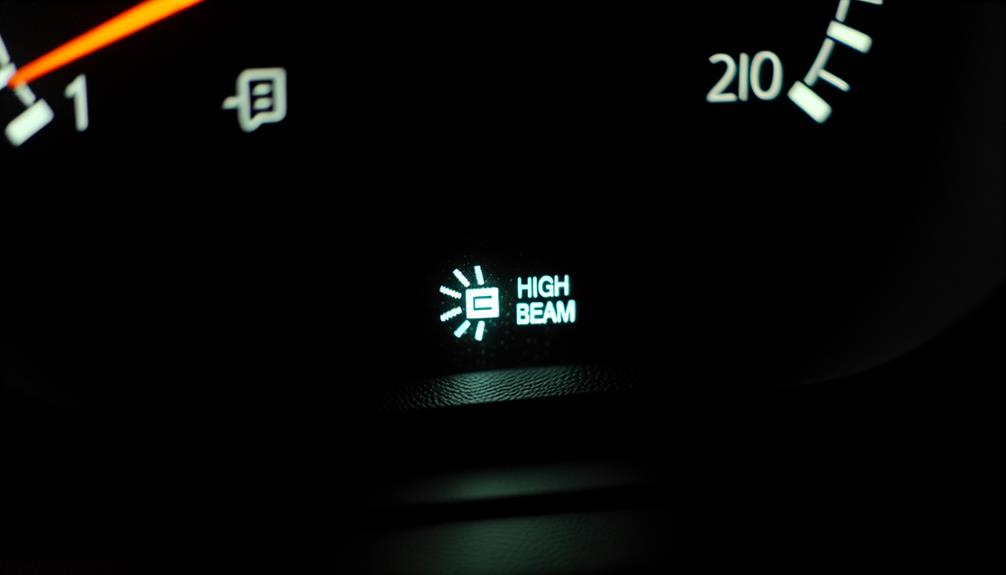
While interpreting dashboard indicators is essential for vehicle maintenance and safety, various common misconceptions can lead to misinterpretation and improper responses.
One prevalent misunderstanding is confusing the high beam symbol with the low beam indicator. The high beam symbol typically features a blue light with straight horizontal lines pointing outward, whereas the low beam uses a green light with downward slanting lines.
Another misconception is assuming that the dashboard warning light turns off automatically, leading to prolonged usage of high beams, which can be hazardous.
Additionally, some drivers mistakenly believe that the high beam symbol signifies improved visibility under all conditions, neglecting the potential for glare to other drivers.
Understanding these nuances is important for accurate and safe vehicle operation.
Proper Use of High Beams
Effectively utilizing high beams requires an understanding of when and where their use is appropriate to ensure both optimal visibility and the safety of all road users.
High beams are most beneficial on rural roads or highways with minimal street lighting, providing an extended field of vision. However, they should not be used in fog, heavy rain, or snow, as the light can reflect back and impair visibility.
It is essential to switch to low beams when approaching or following another vehicle within 500 feet to avoid blinding other drivers. Properly using high beams enhances night driving safety, ensuring not only the driver's clarity of vision but also minimizing risks for other motorists on the road.
High Beam Etiquette
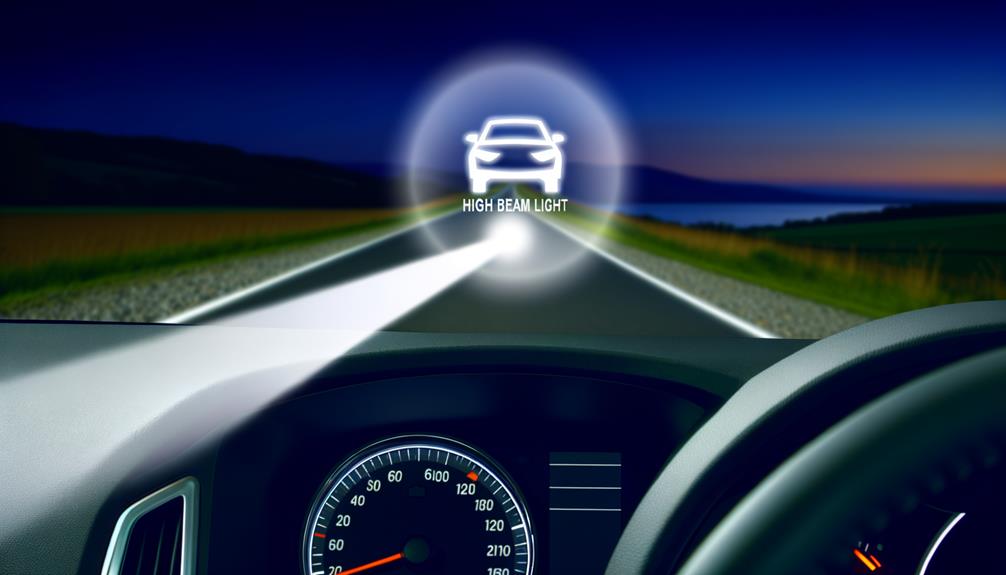
Adhering to high beam protocol is crucial for upholding safety and courtesy on the road. High beams offer improved visibility, but their improper use can lead to dazzling, temporarily blinding approaching drivers and escalating the likelihood of accidents. Drivers should transition to low beams when within 500 feet of an oncoming vehicle or when approaching another vehicle from behind.
In urban areas with adequate street lighting, utilizing low beams is recommended to prevent unnecessary dazzling. Moreover, never respond with high beams if another driver neglects to dim theirs. Instead, maintain your calm and concentrate on safe driving techniques.
Proper high beam conduct not only guarantees a more secure driving atmosphere but also promotes mutual respect among road users.
Troubleshooting High Beam Issues
Diagnosing high beam malfunctions starts with investigating the most common culprits, such as blown fuses, faulty wiring, or burned-out bulbs. Tackling these issues requires a methodical approach to pinpoint the exact problem.
Begin by examining the high beam fuse in the vehicle's fuse box. If the fuse is intact, proceed to check the wiring for any visible damage or disconnections.
Next, assess the condition of the high beam bulbs, replacing any that are burned out. Additionally, verify the proper functioning of the high beam switch and relay.
- Check high beam fuse: Look for any indications of damage.
- Inspect wiring: Identify any frayed or disconnected wires.
- Test bulbs: Replace if needed.
- Evaluate switch: Confirm it engages correctly.
- Examine relay: Validate operational status.
Enhancing Night Driving Safety
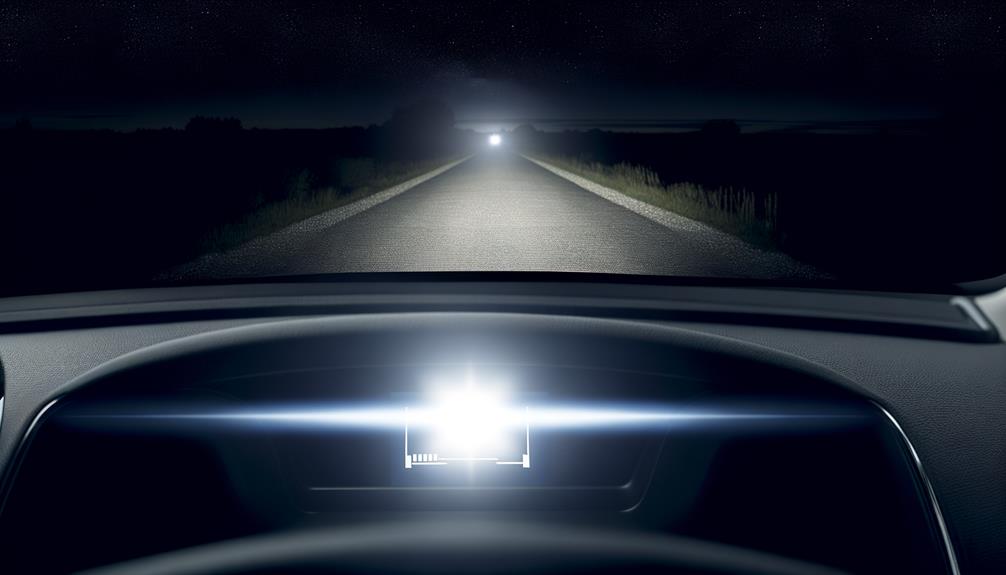
To enhance night driving safety, it is essential to make sure that your vehicle's lighting system is well-maintained and optimized for maximum visibility. Regular checks and timely replacements of headlights, taillights, and high beam lights guarantee that you are not caught off guard by sudden failures. Proper alignment of these lights is critical to avoid blinding oncoming traffic and to provide a clear view of the road ahead.
| Component | Maintenance Tip |
|---|---|
| Headlights | Clean lenses, check intensity |
| Taillights | Inspect for fractures, replace bulbs |
| High Beam Lights | Test functionality, adjust elevation |
| Fog Lights | Ensure accurate angle, replace as necessary |
Conclusion
The high beam lights symbol, a beacon in the night, plays a crucial role in ensuring road safety. Mastery of its recognition, operational mechanics, and proper usage can greatly enhance night driving experiences.
Understanding dashboard indicators and debunking common misconceptions fortifies this knowledge. Adherence to high beam etiquette and troubleshooting techniques further cements their utility.
Ultimately, high beam lights serve as an indispensable tool, illuminating the path to safer driving and reduced road incidents.




